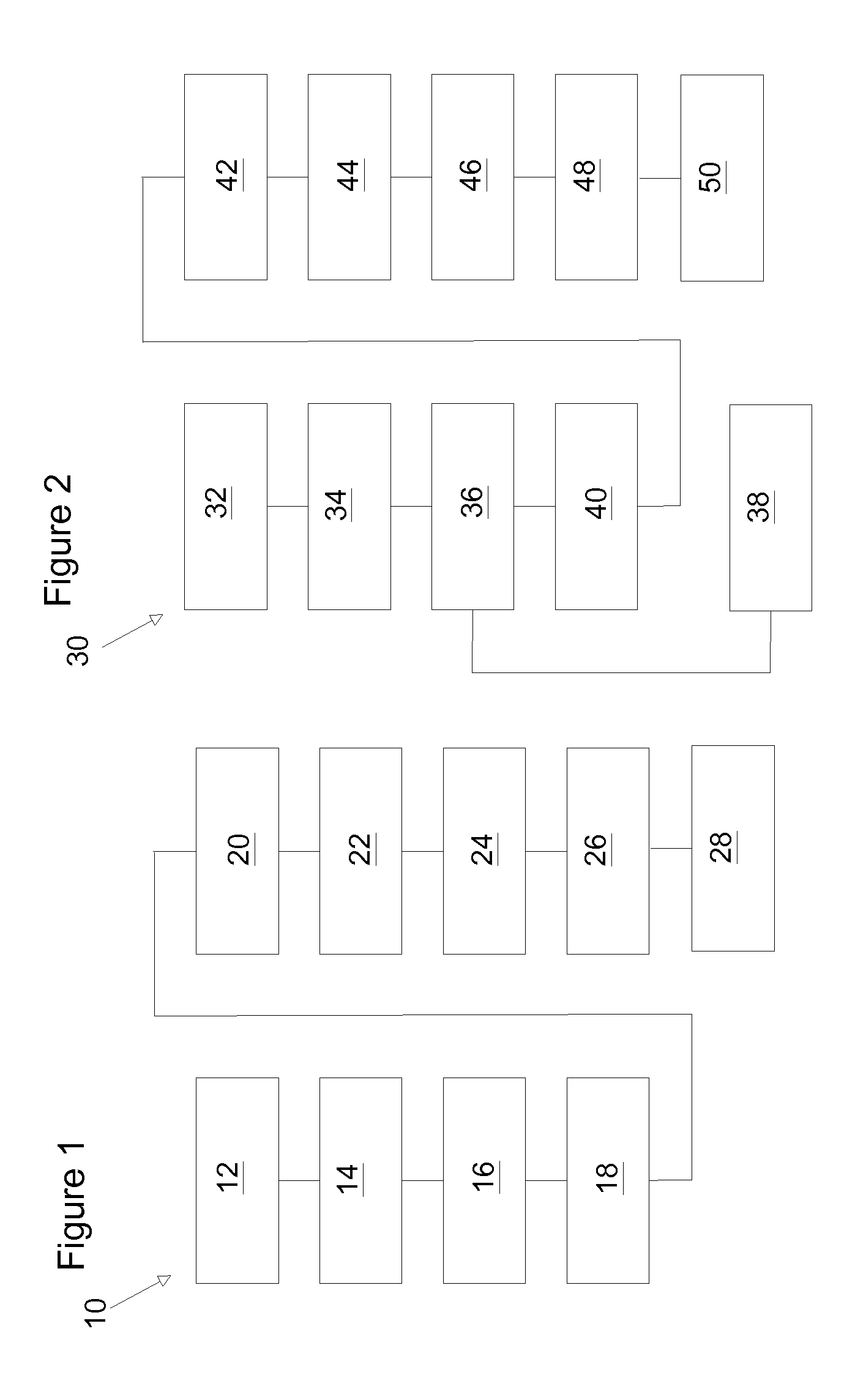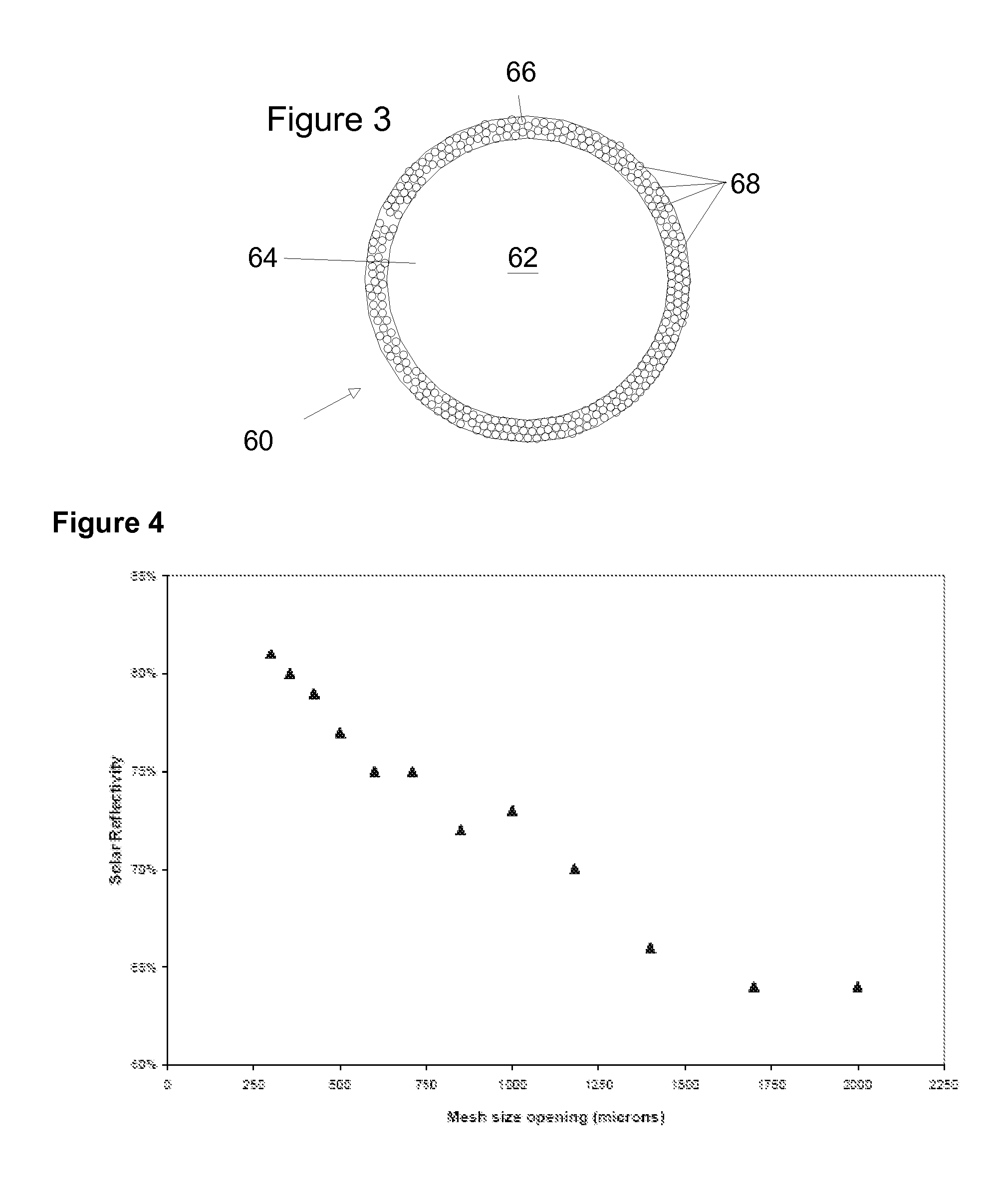Solar heat-reflective roofing granules, solar heat-reflective shingles, and process for producing the same
- Summary
- Abstract
- Description
- Claims
- Application Information
AI Technical Summary
Benefits of technology
Problems solved by technology
Method used
Image
Examples
example 1
[0104]Roofing shingles with high solar reflectance according to the present invention were simulated by applying particles made from sintered kaolin clays onto asphalt substrate. These sintered kaolin clay particles had specific particle sizes and solar reflectance greater than 70 percent, as shown in Table 1. The sintered kaolin clay particles are commercially available from Saint-Gobain Corp., Stow, Ohio under the trade name “LWP proppant.” By blending these particles having a designed grading, one can create particle blends of various particle sizes to optimize surface coverage. Examples of various size blends are shown in Table 2. These blends were then applied onto a 1 / 16″ thick asphalt film cast on an aluminum plate (25 mil thickness, available from Q-Panel) to simulate the shingle making process. The asphalt shingle panel was made by first casting molten asphalt (Venezuelan crude source) onto the aluminum panel substrate and pressed to a uniform 1 / 16″ thickness film. The asph...
example 2
[0105]Highly solar-heat-reflective roofing granules are made by coating crushed metamorphic rock particles (#11 grading base rock, available from CertainTeed Corp., Gads Hill, Mo.) with kaolin clay and subsequently sintered the coating at 1250° C. The coating process was carried out by first mixing 12 lb of the base rock with 109 gm of starch as dry binder in an Eirich mixer (model RVO2E, available from Eirich Corp., Gurnee, Ill.) until a uniform appearance is achieved. 365 gm of wet binder (AR animal glue) was then introduced into the mixture over an additional 2 minute period, followed by slow addition of 2 lb kaolin clay containing 0.12% starch. Mixing was continued until a uniform coating formed on the base rock. The resultant granules were then fired in a rotary kiln to a sintering temperature of 1250° C. to fuse the kaolin clay coating. Care was given in order to prevent agglomeration of the granules. The finished granules have a solar reflectance of 42% and the color reading ...
example 3
[0106]Roofing shingles with high solar reflectance according to the present invention were simulated by applying particles made from sintered kaolin clays onto asphalt substrate as in Example 1. Unimodal sintered kaolin clay particles with specific particle sizes were prepared by Saint-Gobain Proppants by sieving, and the particle sizes and particle-size distribution is determined using a CAMSIZER® optical particle size analyzer which is manufactured by Retsch Technology in Germany. The average particles sizes are reported in terms of US mesh size and microns in Table 3. The solar reflectance of the monodisperse particles was measured by spreading a layer of particles having a thickness of about 30 mm and using a solar reflectometer as in Example 1. The monodisperse particles were then applied onto an asphalt film cast on an aluminum plate to simulate the shingle making process as detailed in Example 1. Coverage of the asphalt film by the granules was determined by ImagePro digital ...
PUM
| Property | Measurement | Unit |
|---|---|---|
| Temperature | aaaaa | aaaaa |
| Temperature | aaaaa | aaaaa |
| Fraction | aaaaa | aaaaa |
Abstract
Description
Claims
Application Information
 Login to View More
Login to View More - R&D
- Intellectual Property
- Life Sciences
- Materials
- Tech Scout
- Unparalleled Data Quality
- Higher Quality Content
- 60% Fewer Hallucinations
Browse by: Latest US Patents, China's latest patents, Technical Efficacy Thesaurus, Application Domain, Technology Topic, Popular Technical Reports.
© 2025 PatSnap. All rights reserved.Legal|Privacy policy|Modern Slavery Act Transparency Statement|Sitemap|About US| Contact US: help@patsnap.com



